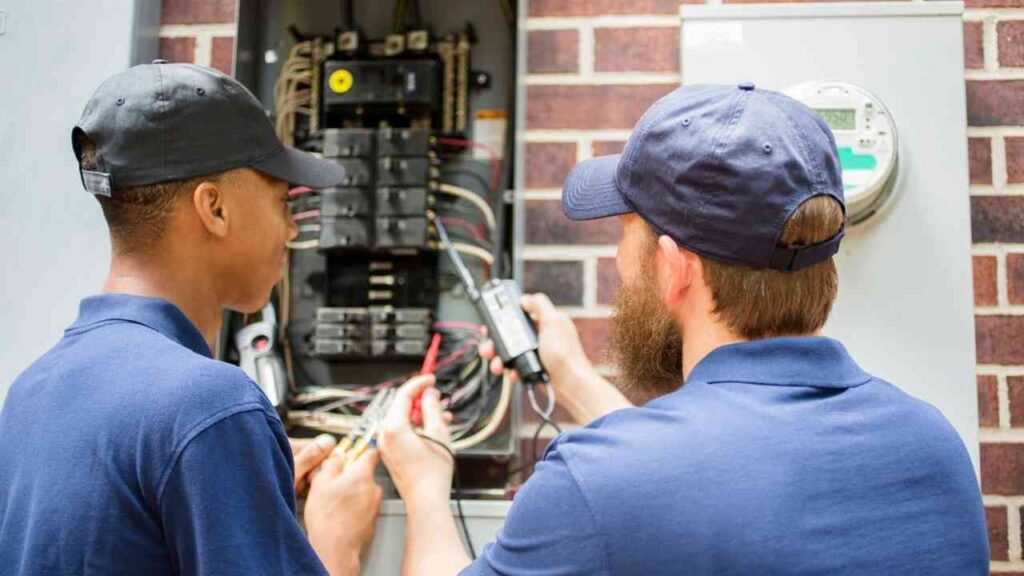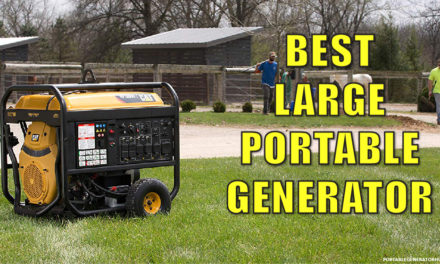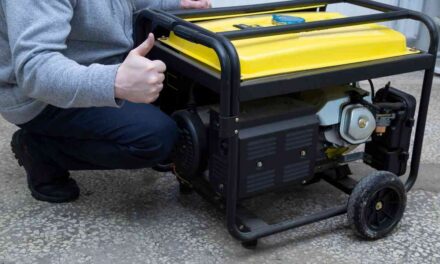
Are you a novice who doesn’t know how portable generators work? Perhaps you have the layman’s idea but are still skeptical, then take time to go through this.
Buying a portable generator for domestic and commercial purposes is not enough. When you buy a generator, you might also need to buy a transfer switch.
The transfer switch comes in various types. Some work automatically, while some function manually. They are available in stores in different shapes and designs; ask your nearest vendor first.
Another transfer switch that most owners preferably opt for is the circuit breaker. Most states in the US endorse its use. The circuit breaker transfer switch comes in the form of a box.
However, you really can’t install the breaker box for your generator, except you learn about it first. Indeed, that’s why you’re to learn How to Connect Portable Generator to Breaker Box with this piece. But first off, let’s start from the basis by explaining what a breaker box is all about.
What is a Breaker Box?
A circuit breaker box is an enclosure that offers a divisional breakdown of electrical circuits as currents are distributed on par throughout the circuit. It could also be said as an electrical box that entails switches of multiple phases around the house. It requires installation around the house.
The box is an electrical grid that typically has switches that relatively represent each of the circuits in your home. The utility and generator power can be interchangeably switched off and on.
This electrical grid often has an external control panel where the generator’s power outlet is connected straight into by the end of the day. Besides, learn what a breaker box does below.
What Does a Breaker Box Do?
A breaker box is an electrical panel that users often use to regulate the distribution of electrical power that flows into their homes. The circuit breakers are demarcated serially and vertically in most cases. There is a switch for each circuit that’s attached to the property from the house. The control button is often designed as a toggle with an on and off inscription.
The moment the power is running from the generator, one can decide the circuit that will be powered. This technology enables the switching on and off the toggle inside the electrical box. Every standard breaker box has single, double, and triple pole circuit breakers.
Nonetheless, the breaker box can’t work without the transfer switch. The transfer switch serves as the transitional power operator between the utility power and the power generated from the generator.
What Size Breaker Box Do I Need for Portable Generator?
This lies in the capacity of your generator. The properties you intend to power with your generator would give you a glimpse of the suitable size. Power is proportional to the multiplication of current and voltage. Therefore, what’s the overall power rate that your generator produces?
Divide the overall power rate of the generator by the power outlet of the generator. Let’s take, for instance, that the generator has a 65000W running capacity, and you intend to use it on a 120V power outlet. Divide the power by the voltage, and you will see that you can use a 50amp for a single-pole circuit breaker.
How to Connect Portable Generator to Breaker Box – 5 Factors To Consider
1. Buy a Generator and a Corresponding Breaker Box
A portable generator’s capacity will determine the type of breaker box that will work for you. There are single-pole, double-pole, three-pole, GFCIs, and AFCIs. The three-pole circuit breaker is for industrial purposes, while the likes of GFCI and AFCI circuit breakers are usable alongside the three types of standard circuit breakers.
The former is installed against electrocution by water, while the latter is installed against fire breakouts. You could buy 50amp, 40amp, 30amp, 20amp, and those with lesser amperage power breakers.
Single-pole circuit breakers are great with breakers of low amperages, such as 15amp and 10amp at 120V, while double-pole circuit breakers can work with circuit breakers of 20amp and 60amp at 240V.
2. Assessing the Circuit Breaker
Circuit breakers are delivered in different designs these days. Go through the manuals that come with the delivery of the product. Use it to understand how the wires are to be arranged.
Identified the screws and the perforated spots on the circuit breaker and dented them in order to safely pass the wires into the poles in the breaker box.
The single poles allow a single hot wire, while the double pole breakers use two hot wires and one neutral wire that connects the two hot wires. How you connect your wires to these phases differs? Check the next point to learn about the systematic ways of doing so.
3. Wiring
Identify the circuits in your home that you’re powering with the generator. If the number of breakers in the box is for six slots, then run power from the generator to six circuits/properties in your house. Take time to understand the voltage that each of the properties uses.
Run the wires from the transfer switch into the breaker box by denting commodious holes at any part of the box. Run one hot wire on single poles and two hot wires for double pole breakers. The hot wires and red wire running from the transfer switch into the circuit must be the same as the house’s one.
4. Grounding
Grounding your connection after wiring is essential to prevent electrocution. Grounding prevents electrons from flowing where they ought not to flow. So, while the hot wires from the transfer switch go to their respective poles, the green/neutral wires are grounded on the ground bar. Use the screw to loosen the buttons on the ground bar.
Ensure that the ground bar the neutral wires are screwing down into is connected to the ground rod connected from the outside. The ground bar on the other end, right at the other flank, should have the neutral white wire running from the home. That’s where the white wires running from the transfer switch will be connected to also.
5. Final Checking
The box should be mounted sturdily against the wall to enhance maximum safety around the vicinity. Observe the inference and note that while one hot wire from the transfer switch runs into a single pole, another hot wire from the house is connected on the other side of the same single pole.
Two hot wires from the two ends run into double poles. Ensure that you check out these before going on to the grounding of the connection. Afterward, you can switch on the generator to know if you’ve made a flowery connection.
How to Wire Portable Generator to Breaker Box without a Transfer Switch?
This means you wouldn’t be adding the utility power connection to the power transition. The link would just be straight into the outlets in the house. Therefore, ensure that you’ve done all the necessary calculations to prevent overvoltage in the connection.
You can use the minimum power required to power your units at home as guides to make a connection. Buy a removable console to enable safe, direct fixation of the power cord from home into the generator’s power outlet. Place the removable console before directly plugging in the power cord from your home.
You might need to dent holes on the wall to ease the passage of the cords. You could plug an extension’s cable straight into the generator’s outlet while other appliances connect power straight from the extension.
5 Safety Tips:
- When the load is more than the breaker amperage, it could cause the power to trip.
- Inability to decipher the coupling and wiring should pave the need for hiring a licensed electrician. It could be hazardous to neighbors and the electricity grid as it could cause dissipation in the current flux.
- GCFI and ACFI are suitable options for damp areas and places engulfed with fire breakouts respectively.
- Zone code of the placement of the generator should be checked before mounting the generator. The installation of the breaker box should be relatively done regarding that thought.
- Ensure that the wires are well screwed into their designated spots on the breakers.
Final Words
This piece aptly taught you how to wire portable generators to breaker boxes. This piece has successfully aided you in making a recognizable effort in understanding how the fundamentals work. Nevertheless, this shouldn’t replace the need to hire the services of a licensed electrician. This would enable you to be on the safer side of your exercise. Don’t forget to read the manual also. It goes a long way in saving errors.





